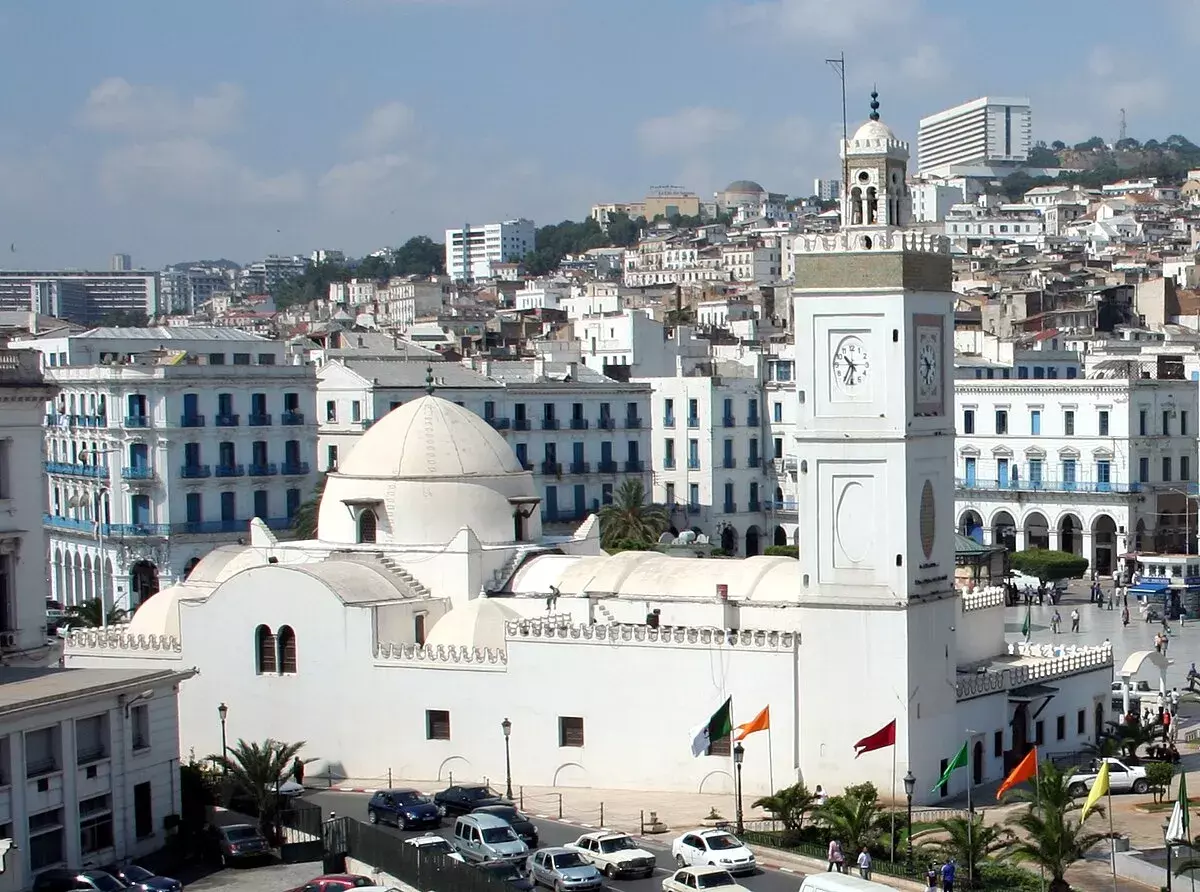
Djamaa el Djedid (New Mosque)
Overall Rating: ⭐⭐⭐⭐☆ (4/5)
Rating Breakdown:
✔ Historical Significance – ⭐⭐⭐⭐⭐ (5/5)
✔ Architectural Beauty – ⭐⭐⭐⭐☆ (4/5)
✔ Accessibility – ⭐⭐⭐☆☆ (3/5)
✔ Tourist-Friendly – ⭐⭐⭐☆☆ (3/5)
✔ Maintenance & Preservation – ⭐⭐⭐⭐☆ (4/5)
Weather
- Algiers experiences a Mediterranean climate characterized by hot, dry summers and mild, wet winters.
Tags
- Historic Mosque, Ottoman Architecture, Cultural Heritage
Timings
- Visiting hours may vary; it's advisable to check locally or with tour operators for current schedules.
Time Required
- A visit typically requires 1 to 2 hours to explore the mosque thoroughly.
Entry Fee
- Entry fees, if applicable, should be confirmed on-site or through official channels.
Things to See & Do
- Architectural Exploration: Admire the mosque's unique blend of Ottoman, Andalusian, and Italian architectural styles, featuring a central dome reaching 24 meters, supported by four pillars and surrounded by octagonal cupolas. Wikipedia
- Historical Significance: Learn about the mosque's establishment in 1660 by al-Hajj Habib, a Janissary governor, and its role in Algiers' religious and social history. Wikipedia+1Archnet+1
- Minaret Observation: Observe the traditional North African square minaret, originally 30 meters high, now standing at 25 meters due to rising street levels. Wikipedia
Best Time to Visit
- Spring (March to May) and autumn (September to November) offer pleasant weather, ideal for exploring the mosque and the surrounding Casbah.
Nearest Parking Spots
- Parking in the Casbah is limited; utilizing public transportation or taxis is recommended.
Overview
- Djamaa el Djedid, also known as the New Mosque, is a historic mosque located in the lower Casbah of Algiers, near the Place des Martyrs. Built in 1660 during the Ottoman rule, it stands as a testament to the rich cultural and architectural heritage of the period. The mosque's proximity to the fishing harbor earned it the nickname "Mosque of the Fisherman's Wharf."
- Central Dome: The 24-meter-high central dome is a prominent feature, symbolizing the mosque's grandeur.
- Minaret: The square-shaped minaret reflects traditional North African designs and adds to the mosque's skyline presence.
- Interior Decorations: The mosque's interior showcases a blend of Italian and Andalusian influences, with intricate carvings and a mihrab arch following Andalusian models.
- The mosque exhibits a harmonious blend of Ottoman, Andalusian, and Italian architectural elements. Its central dome is supported by four pillars and surrounded by octagonal cupolas. The use of Italian marble for the minbar reflects Ottoman traditions, while the mihrab's arch follows Andalusian models. The exterior is characterized by whitewashed stone structures, including the domes, resulting in a unified white appearance.
- Guided Tours: Engaging a local guide can enhance the experience by providing in-depth historical context.
- Dress Modestly: As a site of religious significance, it's respectful to wear modest attire.
- Photography: Check for any restrictions on photography within the mosque premises.
- Safety: Stay aware of your surroundings, especially when navigating the narrow streets of the Casbah.
- By Foot: Located in the lower Casbah near the Place des Martyrs, it's accessible through the winding streets of the old city.
- By Public Transport: Buses and taxis are available from various parts of Algiers to the Casbah area.
- By Car: Due to limited parking, it's advisable to use public transportation or park at designated areas and walk to the mosque.